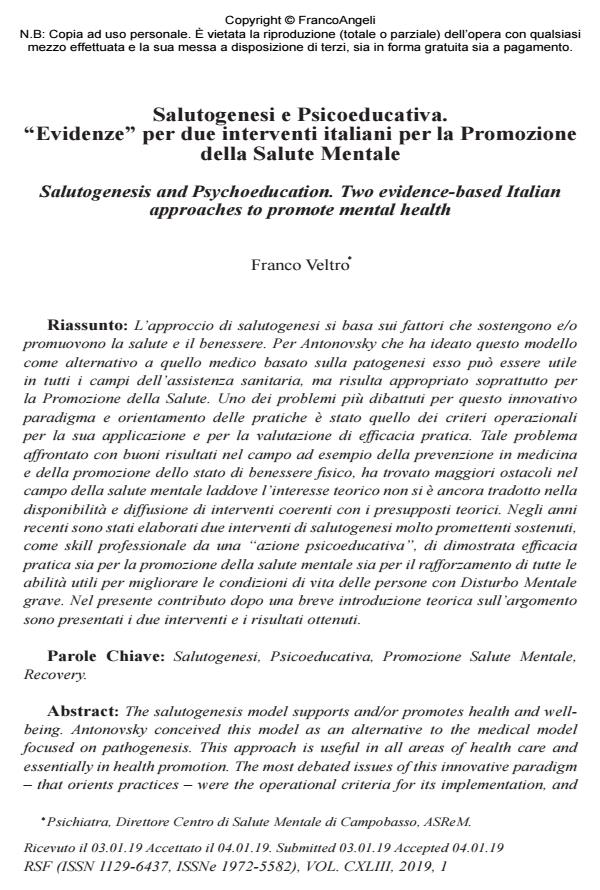Salutogenesis and Psychoeducation. Two evidence-based Italian approaches to promote mental health
Journal title RIVISTA SPERIMENTALE DI FRENIATRIA
Author/s Franco Veltro
Publishing Year 2019 Issue 2019/1
Language Italian Pages 13 P. 107-119 File size 1814 KB
DOI 10.3280/RSF2019-001007
DOI is like a bar code for intellectual property: to have more infomation
click here
Below, you can see the article first page
If you want to buy this article in PDF format, you can do it, following the instructions to buy download credits

FrancoAngeli is member of Publishers International Linking Association, Inc (PILA), a not-for-profit association which run the CrossRef service enabling links to and from online scholarly content.
The salutogenesis model supports and/or promotes health and wellbeing. Antonovsky conceived this model as an alternative to the medical model focused on pathogenesis. This approach is useful in all areas of health care and essentially in health promotion. The most debated issues of this innovative paradigm - that orients practices - were the operational criteria for its implementation, and the evaluation of its effectiveness. These problems were addressed and obtained good results in the fields of prevention in medicine and promotion of well-being. In mental health, however, greater obstacles arose. In this field the theoretical interest has not yet received the attention and implementation consistent with the theoretical assumptions. In recent years, two promising and effective salutogenesis interventions were devised and implemented, using proven professional psychoeducational skills. The first intervention focuses on the promotion of mental health and the second on strengthening the abilities of people with severe mental disorder in order to improve their living conditions. The author, after a brief theoretical introduction, describes two case studies and the results obtained.
Keywords: Salutogenesis, Psychoeducational, Mental Health Promotion, Recovery.
Franco Veltro, Salutogenesi e Psicoeducativa. "Evidenze" per due interventi italiani per la Promozione della Salute Mentale in "RIVISTA SPERIMENTALE DI FRENIATRIA" 1/2019, pp 107-119, DOI: 10.3280/RSF2019-001007